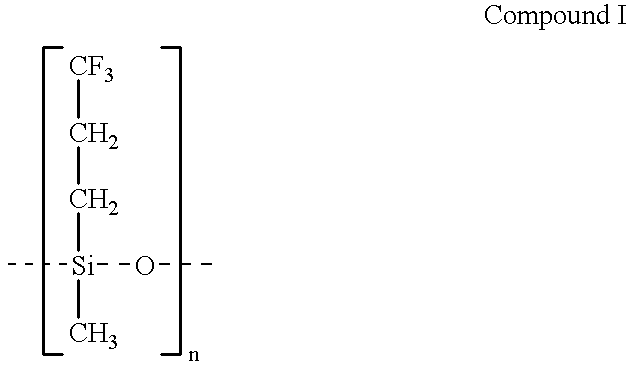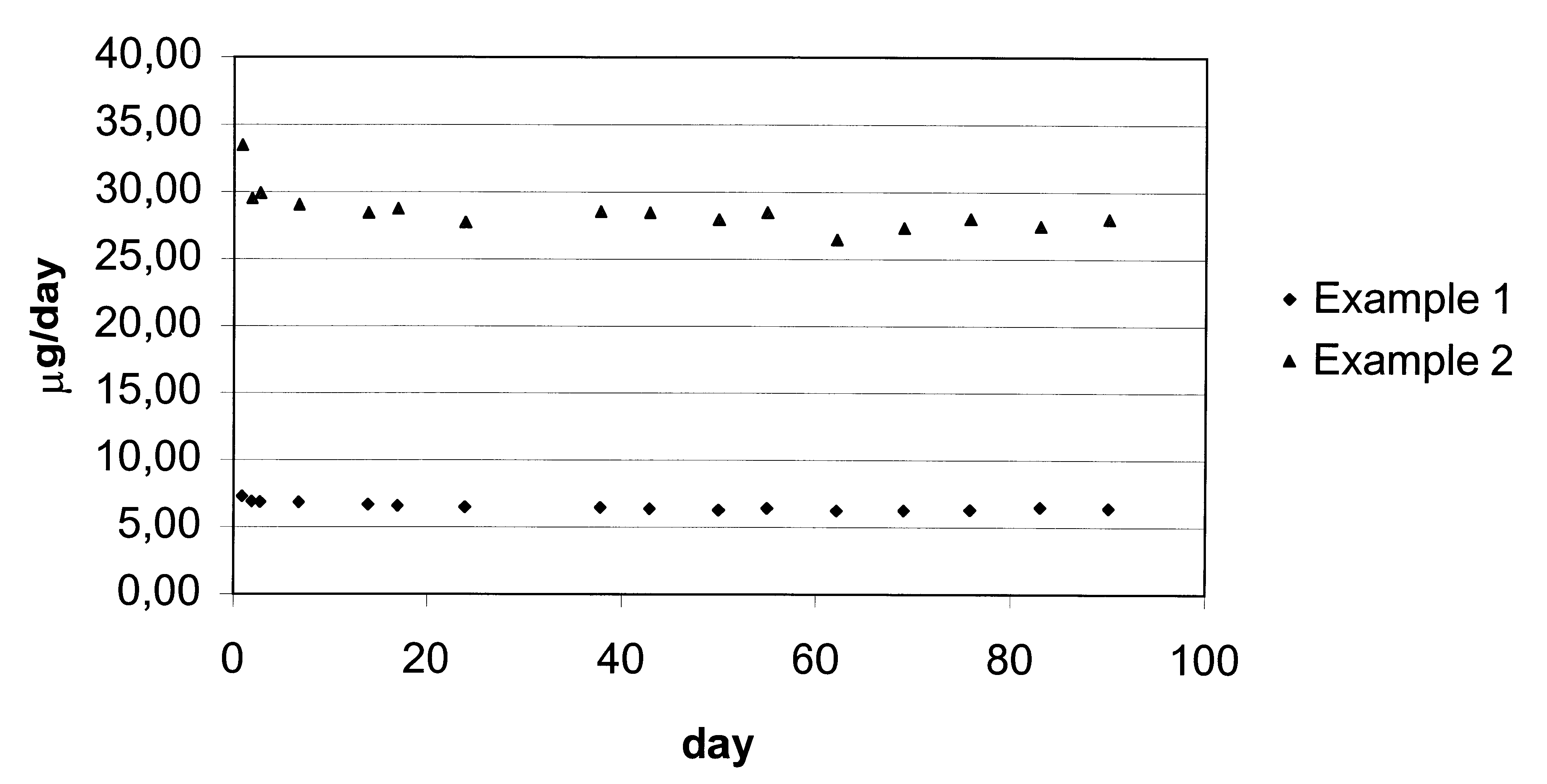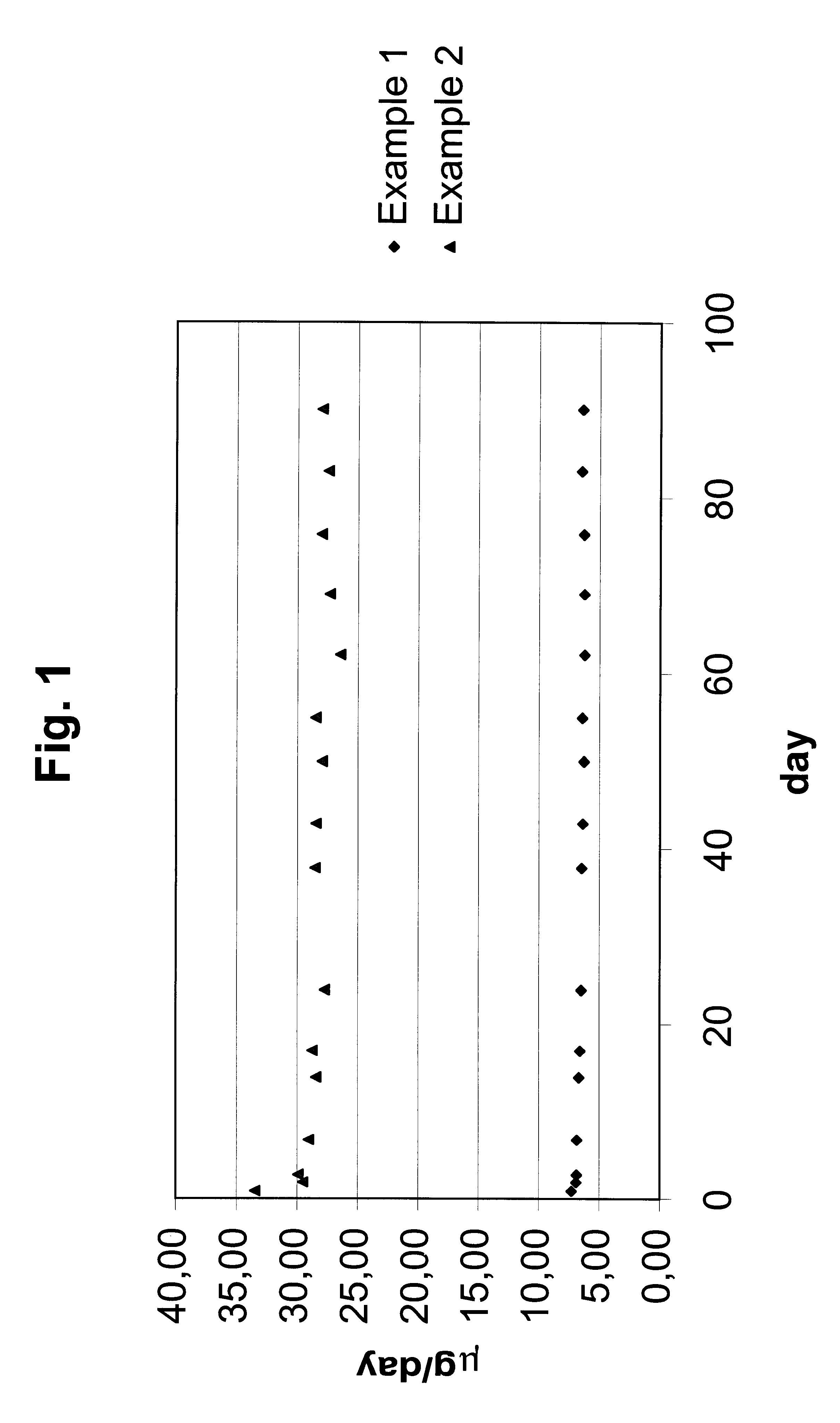Drug delivery device, especially for the delivery of gestodene
a technology of gestodene and delivery device, which is applied in the direction of pill delivery, pharmaceutical delivery mechanism, medical science, etc., can solve the problems of not being able to disclose trifluoropropyl substituted elastomers, and achieve the effect of less retarding influence on the permeation of drugs, high dependence on the drug used, and great retarding
- Summary
- Abstract
- Description
- Claims
- Application Information
AI Technical Summary
Benefits of technology
Problems solved by technology
Method used
Image
Examples
example 2
In this example 18% of the substituents of siloxane groups in the membrane were 3,3,3-tifluoropropyl groups.
The core and the IUS were prepared according to the example 1.
Membrane Preparation
55 parts by weight of silica-filled poly(trifluoropropylmethylsiloxane-co-dimethylsiloxane-co-vinylmethylsiloxane) (content of trifluoropropyl-methylsiloxane units 99,7 mol-%), 45 parts by weight of silica-filled poly(dimethylsiloxane-co-vinylmethylsiloxane) (i.e.e degree of trifluoropropyl substitution 18%) and 1,2 parts by weight of dibentsoylperoxide-polydimethylsiloxane (50% of dichlorobenzoylperoxide) paste were mixed with a 2-roll mill. The mixture was extruded into a tube-like form with a wall thickness of 0,4 mm and cured by heat.
The dmg release test was performed according to example 1 and the results are shown in FIG. 1 as the daily in vitro release rate of gestodene.
Discussion of the Results
FIG. 1 shows the daily in vitro release rate of gestodene from the three IUS's according to exam...
PUM
 Login to View More
Login to View More Abstract
Description
Claims
Application Information
 Login to View More
Login to View More - R&D
- Intellectual Property
- Life Sciences
- Materials
- Tech Scout
- Unparalleled Data Quality
- Higher Quality Content
- 60% Fewer Hallucinations
Browse by: Latest US Patents, China's latest patents, Technical Efficacy Thesaurus, Application Domain, Technology Topic, Popular Technical Reports.
© 2025 PatSnap. All rights reserved.Legal|Privacy policy|Modern Slavery Act Transparency Statement|Sitemap|About US| Contact US: help@patsnap.com



